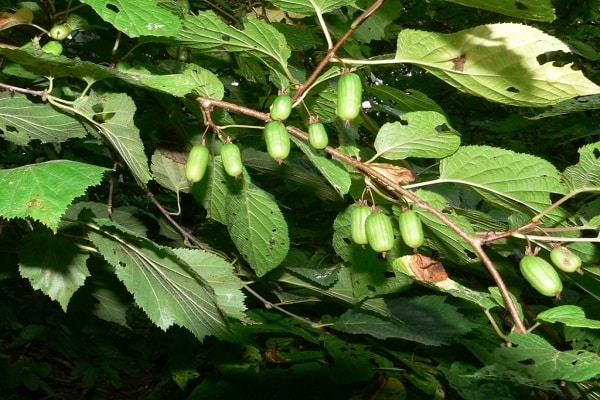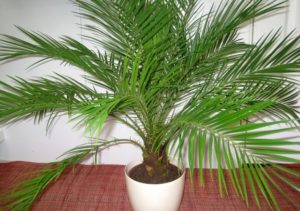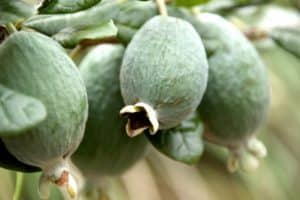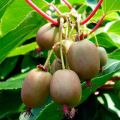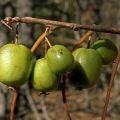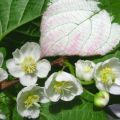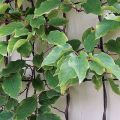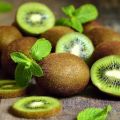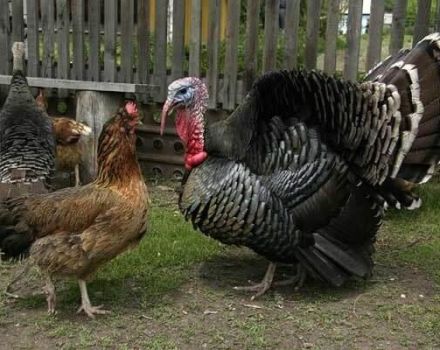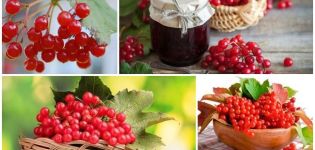Description of varieties of actinidia kolomikta, rules of planting, care, pruning and reproduction
For exotic lovers, breeders are trying to adapt plants as much as possible to the climate of different regions. Sometimes the results are positive, sometimes negative, it all depends on the plants. Actinidia kolomikta are familiar to summer residents as fruit and ornamental plants. Care for them depends on the purpose for which they are grown.
Content
- 1 Botanical description of the variety
- 2 What is the difference between a male and a female
- 3 Varieties and their characteristics
- 4 In which areas it is possible to grow
- 5 Reproduction methods
- 6 Conditions for successful growth
- 7 Choosing the right place
- 8 Features of care for actinidia kolomikta
- 9 All about flowering and fruiting kiwi
Botanical description of the variety
A tree-like liana, whose shoots reach 2-5 cm in diameter. Its lashes reach a length of 15-20 m, depending on growing conditions.
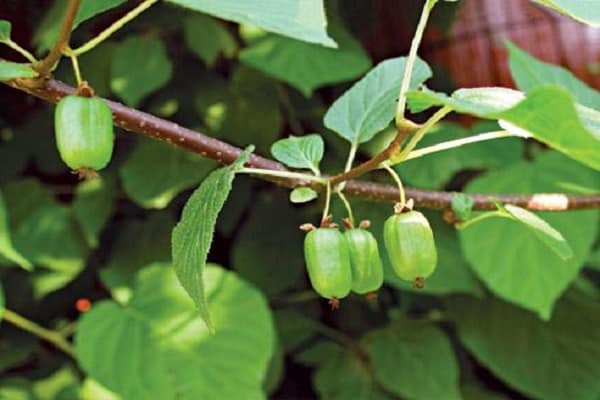
The peculiarity of the plant in the changing color of the foliage:
- While the plant is still growing, they are bronze in color.
- Then they change to green.
- Before the actinidia begins to bloom, the shade at the tips of the leaves changes, they turn white.
- After flowering, it changes to shades of pink, yellow, purple and reddish.
Begins to bloom from the age of 5, the period is long, about 20 days. The flowers are white, slightly pinkish on the back.
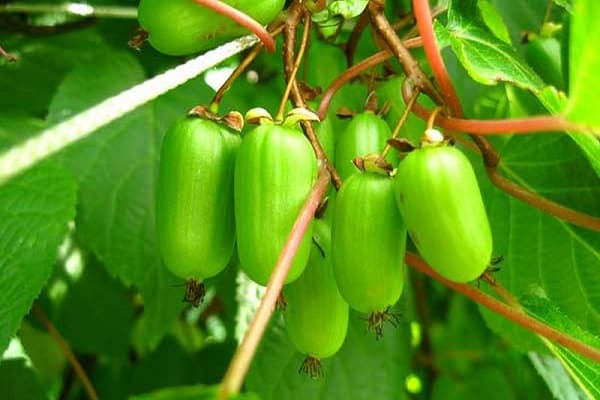
After flowering, actinidia begins to form ovaries, from which dark green berries will appear. Their length is 3 cm, they taste very pleasant, sweet, with a delicate aroma.
The ripening period is in late August or mid-September.
The downside is that the berries crumble very quickly.
Actinidia are a family of 70 species. They differ from each other in some peculiarities.
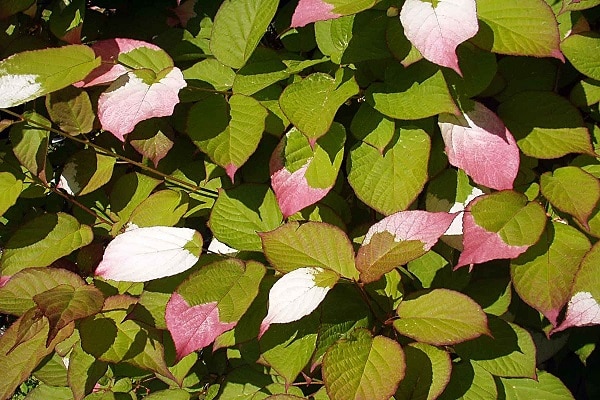
What is the difference between a male and a female
Like all dioecious plants, actinidia kolomikta has a male and female type of vines. The difference between individuals lies in the structure of flowers.
In order to get fruit, gardeners recommend growing several different types of plants.
If the flower has many stamens and the pistil is not visible, the plant is of the male type. A pistil surrounded by stamens suggests that the gardener is facing a female type of actinidia. Pollination requires pollen from a male plant.
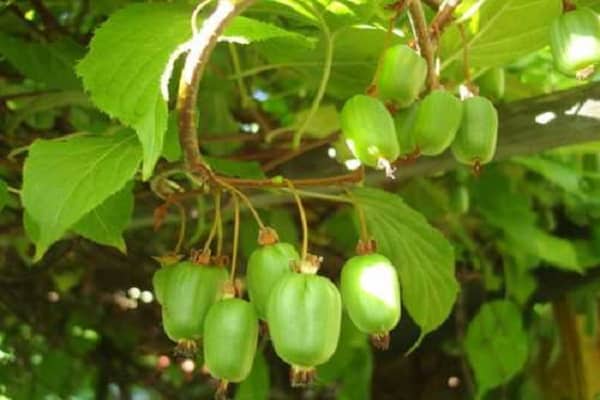
Varieties and their characteristics
Before deciding to grow vines on the site, you need to carefully study the characteristics of the varieties and choose the most suitable one. The species must meet all the necessary requirements that the gardener places on him.
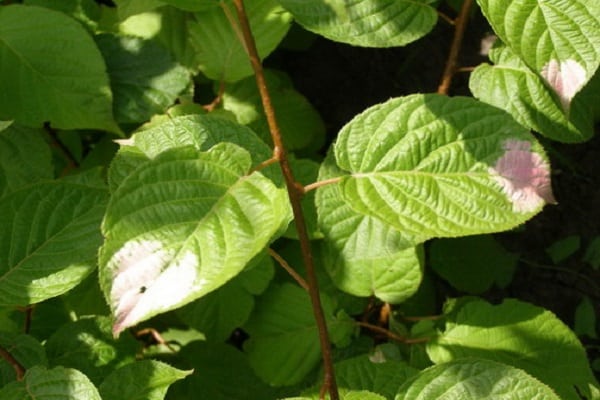
Dr. Shimanovsky
Features of the species in high frost resistance, the plant can withstand -40 ⁰С. Plants of this variety are self-fertile, but to increase yields, it is necessary to grow a male type of plants.
Liana requires the installation of supports, the distance between plants is 1.5 m, to buildings and structures 2-2.5 m. The foliage has a pink tint, which changes to yellow, reddish or dark pink by autumn.
If the plant has enough sunlight, then the shade of the foliage is richer and brighter.
The berries are small, weighing only 3 g, and 2.5 cm long. Their taste resembles something between an apple and a lemon. The fruits fall off immediately after ripening.
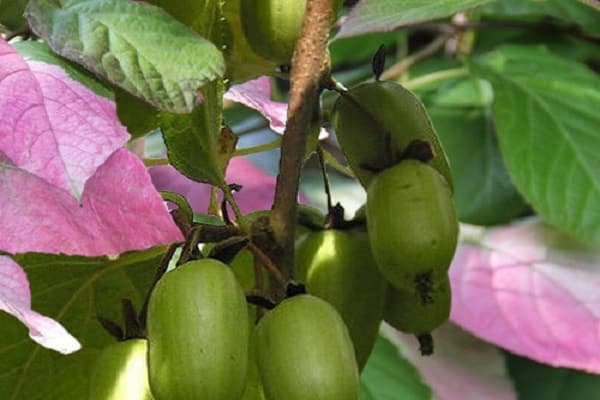
Pineapple
The variety, known to summer residents for a very long time, the height of the bush is 7 m. The first fruits give only in the 7th year. Fruit weight 2 g, length 3 cm. The berry tastes very sweet, with a pronounced pineapple flavor. They are partially covered, some fruits are preserved on the bushes. They are not stored for long after harvesting.
Pineapple actinidia has high winter hardiness. It grows very quickly and has a particularly decorative foliage.

Adam
Male type of plant, used by summer residents to decorate the site. This is due to the fact that when planted in a sunny place, the color of its foliage will be much richer than that of a female. Its height reaches 4 m. The plant is resistant to low temperatures and diseases typical for the culture.
The flowers are small, but the peculiarity of the plant is not in the flowers, but in the color of the foliage, which changes from white to pink during the season.

Gourmet
Liana grows up to 6.5-7 meters. The support wraps around counterclockwise. Flowers in appearance resemble lily of the valley, have a pronounced smell. Flowering lasts almost a month.
The fruits are large compared to other varieties. The mass of actinidia berry Gourmet is 5 g, length is 5-6 cm. Its taste is intensely pineapple, sweet and sour. Resists cold and disease.
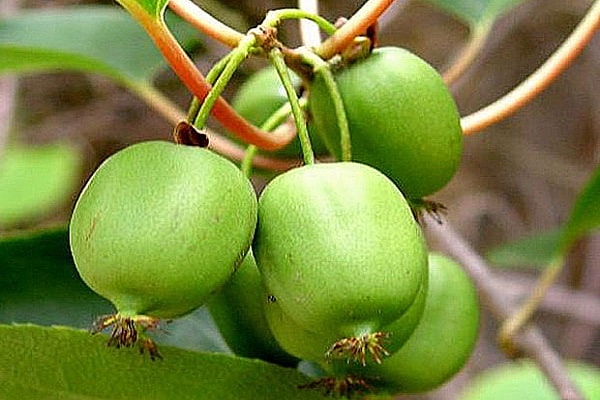
Moma
The liana-shaped shrub reaches a height of 4 meters. Fruits are green, small. The taste contains pineapple notes. Abundant flowering, the ovary is formed annually, the fruits do not crumble. The mature fruit is stored for a short time.
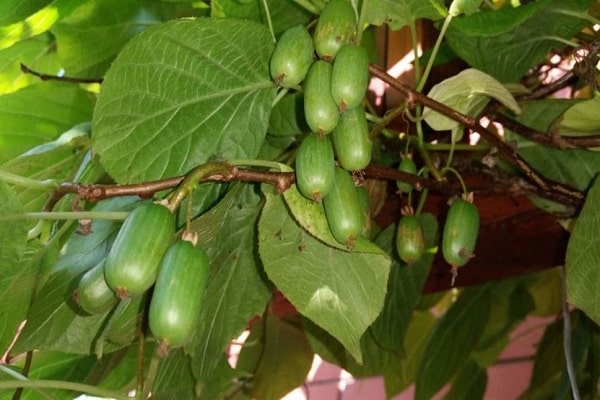
Marmalade
Liana-like plant 3-4 m high. Fruits are cylindrical, weighing 2.3 g. Sweet taste, with pineapple aroma. Be sure to install supports along which the plant will trail.
It is resistant to diseases, does not require special care. For pollination and increasing yields, a male plant is grown in the immediate vicinity.
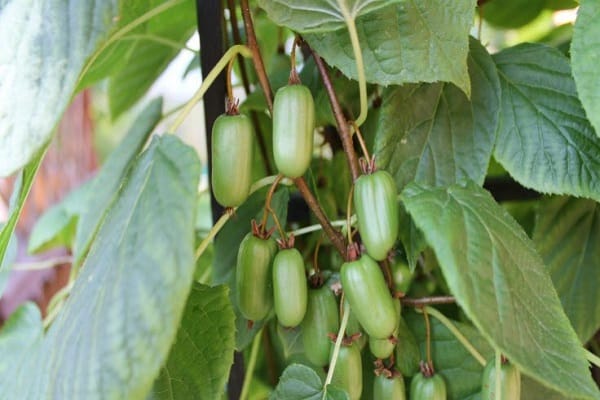
September
The fruits of this species are large, weight reaches 17 g. The taste is sweet, the aroma is pineapple. Ripens in the last decade of September. Hence the name of the variety of actinidia kolomikta.
Liana reaches a length of 20 m. Fruiting occurs in the 2-3rd year after planting. Plants require virtually no maintenance, have high field health and frost resistance.
When all agricultural techniques are performed, up to 20 kg of fruits are harvested from one plant.
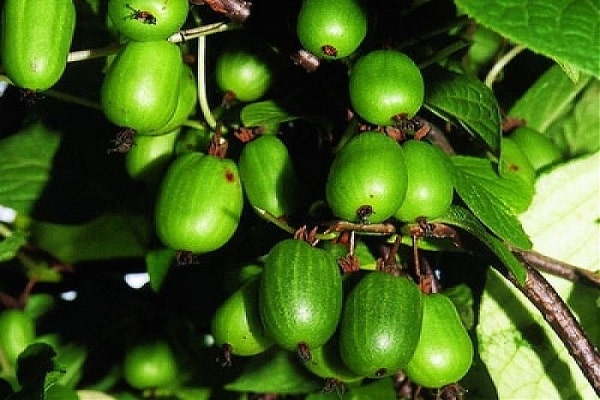
Fragrant
The variety of Fragrant actinidia is universal, since the fruits are used to make jams, preserves, compotes and are consumed fresh:
- large fruits;
- weight 3 g;
- standard taste, sweet and sour;
- aroma is pronounced, nutmeg;
- liana height 3 m.
The plant practically does not require care, even a beginner can grow it on the site.
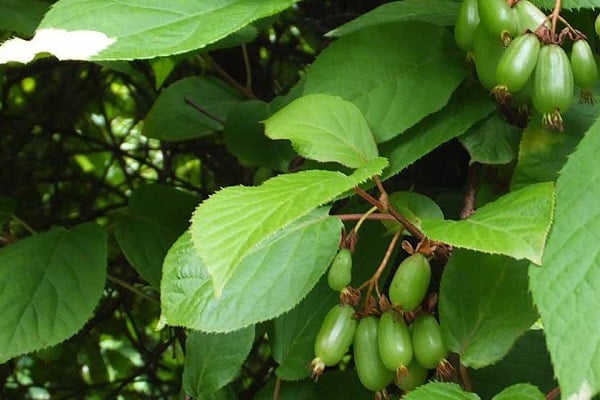
Vitacola
The peculiarity of this species is that the fruits ripen in clusters of 3 pieces. Which is unusual for any other variety of the female type. The height of the liana is 4 m. It ripens in the second decade of August, fruits weighing up to 4.5 g.
Fruiting begins at the age of 3. The berry crumbles heavily when ripe. Since it ripens unevenly, it is better to harvest every 3 days.
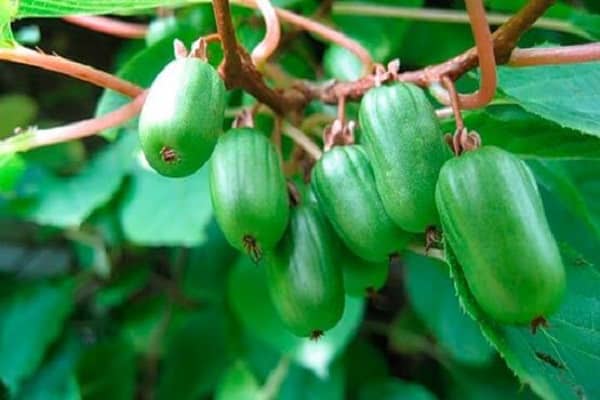
In which areas it is possible to grow
The success of planting directly depends on the region where the vines are grown. Actinidia kolomikta is able to grow and bear fruit throughout the territory of Russia and other states.In the Urals, its cultivation is not something exceptional. It is important to choose a variety that is resistant to the climate of the region, and the plant will delight gardeners with a bountiful harvest.
In the Moscow region, gardeners are experimenting, choosing varieties that are frost-resistant, productive, undemanding to the composition of the soil. Each summer resident has its own priority indicators, which the variety must correspond to.

Reproduction methods
To independently propagate exotics on the site, you will not need anything other than performing standard techniques. Actinidia multiplies layering, cuttings and seeds. It will not be difficult to find a convenient method for yourself.
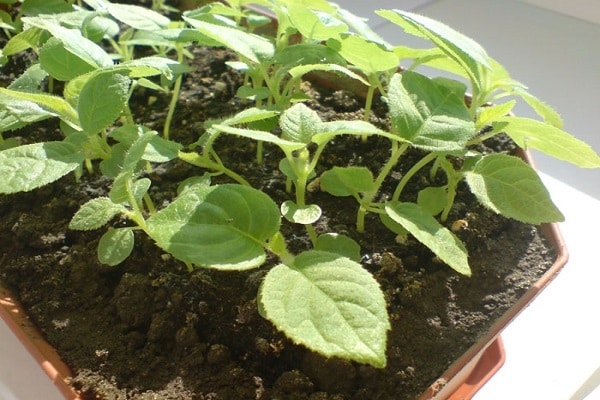
Seeds
The seeds of the berry are obtained from a ripe fruit, they are carefully selected in a bag made of gauze or cloth and washed under running water. Then they are dried and prepared for planting.
Vine seeds germinate very hard, so they are pre-prepared. Spread in cheesecloth, a piece of bandage or nylon, soak for 4 days in water. Then a container with sand is prepared, watered, the seeds are buried there. Keep in a warm place for 45-55 days. Periodically ventilate, once a week taken out of the sand for 5 minutes.
When the specified time has passed, they wrap up the box and put it in the cold for another 2 months. Do not water. After that they are kept at a temperature of + 12 ° C, periodically watering. After 25 days, the seeds will begin to crack.
Take a small container for planting, fill it with a nutrient mixture. Spread out the seeds and sprinkle with a layer of earth. They are waiting for shoots.
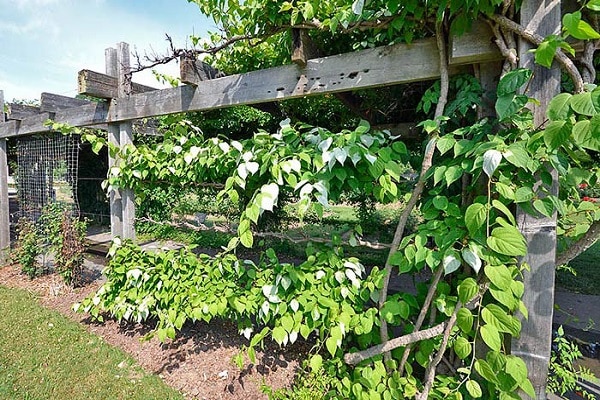
By cuttings
To harvest cuttings, you need a 2-year-old lateral branch of actinidia. The stalk should contain 4-5 buds. One side is cut exactly, the other obliquely. To stimulate the appearance of roots, the workpieces are wrapped with a damp cloth.
They keep it this way for about a week, after white stripes appear on the oblique cut, they are planted in the ground.
Layers
To reproduce in this way, you will need a 3-year-old shoot. It is dropped to the ground in autumn to a depth of 10 cm. It is watered with a root growth stimulant, covered with mulch.
In spring, they are freed from mulch and sprouts are allowed to appear. For a whole year, the cuttings feed along with the mother bush. Only then it is separated with a secateurs.

Conditions for successful growth
To get a crop, actinidia kolomikta needs to create suitable conditions. Subject to all requirements, the plant will certainly delight its owner:
- The correct choice of place, as close to natural as possible.
- There is a high requirement for humidity, to preserve it, the trunk circle is covered with mulch.
- It is impossible to overmoisten the soil, the close-lying root system will begin to rot.
- Sandy soil is not conducive to growing actinidia.
- Be sure to equip a support, without it the vine cannot grow.
- Carrying out care, performing standard agricultural techniques.
Following these steps will allow you to grow a healthy and robust plant.
Choosing the right place
From how correctly the place for growing actinidia is chosen, its decorative appearance, fruiting and growth depend.
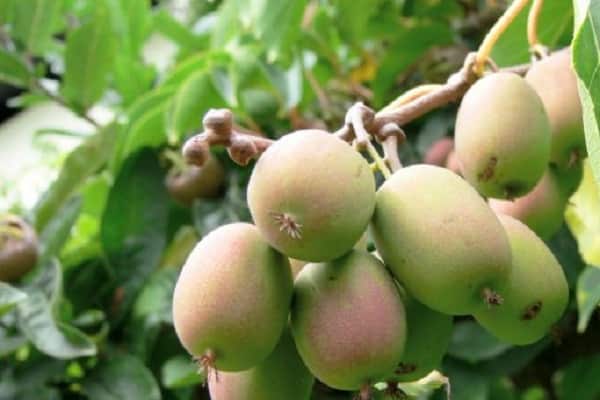
Soil composition
You shouldn't even try to grow actinidia in sandy soil, it is better to plant it in fertile, breathable soil. Liana prefers light to medium loam.
Temperature regime
The optimum temperature for and development of a vine is average. The scorching sun hurts her, but she doesn't feel well in the shade either. It is necessary to choose a place where sunlight is for half the day.
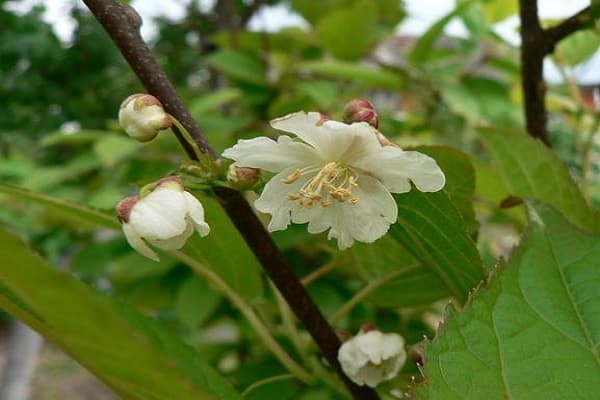
Landing time and technology
It is difficult to give an unequivocal answer to this question. Planting time in each region is different, it depends on the climate of the growing area. Around early spring or autumn.
The garden bed is prepared in advance, the pits for planting should be large, 50 * 50, a drainage layer is laid on the bottom.A layer of earth with humus is laid on top. Leave for several days.
The seedlings are set in pits, sprinkled with earth to the root collar. The earth is tamped with hands, watered abundantly with water. The distance between plants is 1-1.5 m.
Features of care for actinidia kolomikta
Proper care is the key to success. Fulfillment of all requirements will lead to an increase in yield. Standard agricultural techniques, performed correctly, allow you to grow a beautiful plant that gives useful fruits.
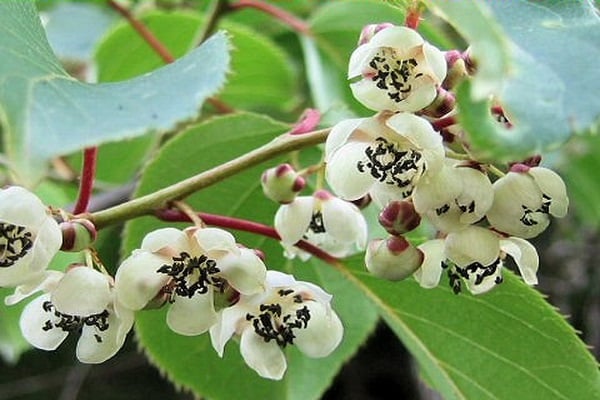
Irrigation
The moisture-loving actinidia kolomikta requires frequent watering, but you should not flood the plants, as the vine may die. Sprinklers are best used by spraying the plants in the morning.
Loosening and mulching
After each watering, it is required to carefully loosen the top layer. This will retain moisture in the soil and provide oxygen to the root system.
Mulching will protect against rapid soil drying and weeds.
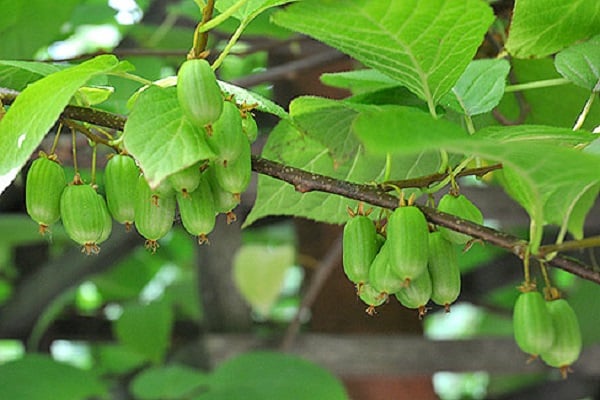
Fertilizing and feeding
Actinidia is fed with mineral fertilizers 3 times per season:
- in the spring;
- during budding;
- after harvest.
Fertilizers are applied strictly under the plant roots.
Bush formation
The first time actinidia kolomikta is cut at 3-4 years of age. Removing excess shoots will increase yields. Proper pruning is essential for the plant.
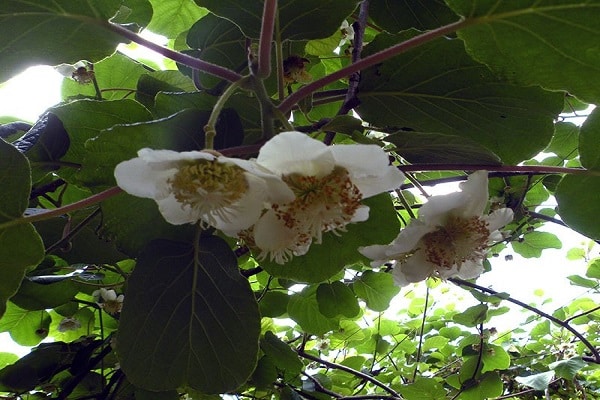
Liana is pruned in summer or autumn. This is not recommended in the spring.
To improve the quality of the fruits, rejuvenating pruning is carried out every 10 years, leaving only 40 cm from the root.
Disease and pest control
High plant immunity and correct planting technique will save actinidia from diseases. But when the first signs of the disease appear, it is necessary to immediately remove the affected areas, and process the bush.
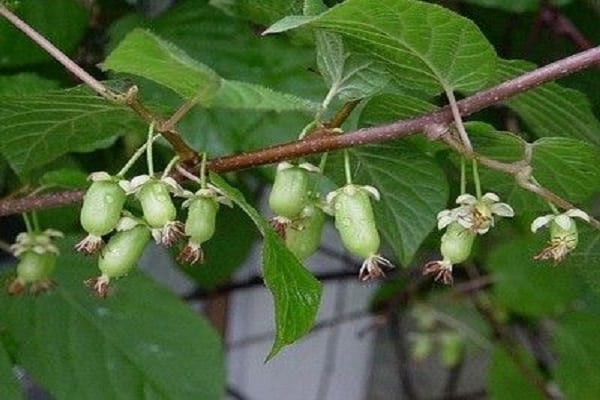
All about flowering and fruiting kiwi
The flowering and fruiting of kiwi directly depends on which variety is grown by the summer resident. Early varieties bloom in late May and ripen in mid-August. Average in early June and late August. It all depends on the climatic conditions of the growing region.
A correctly selected variety and place for planting actinidia is half the success. Even beginners will not have any difficulties.
